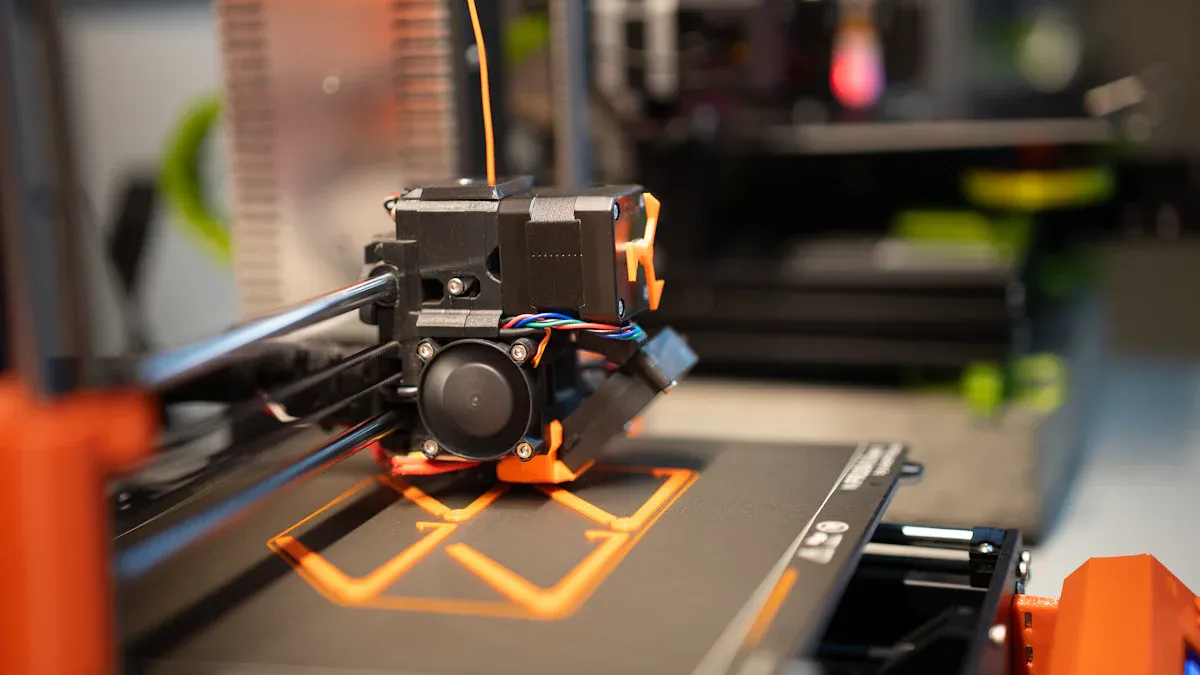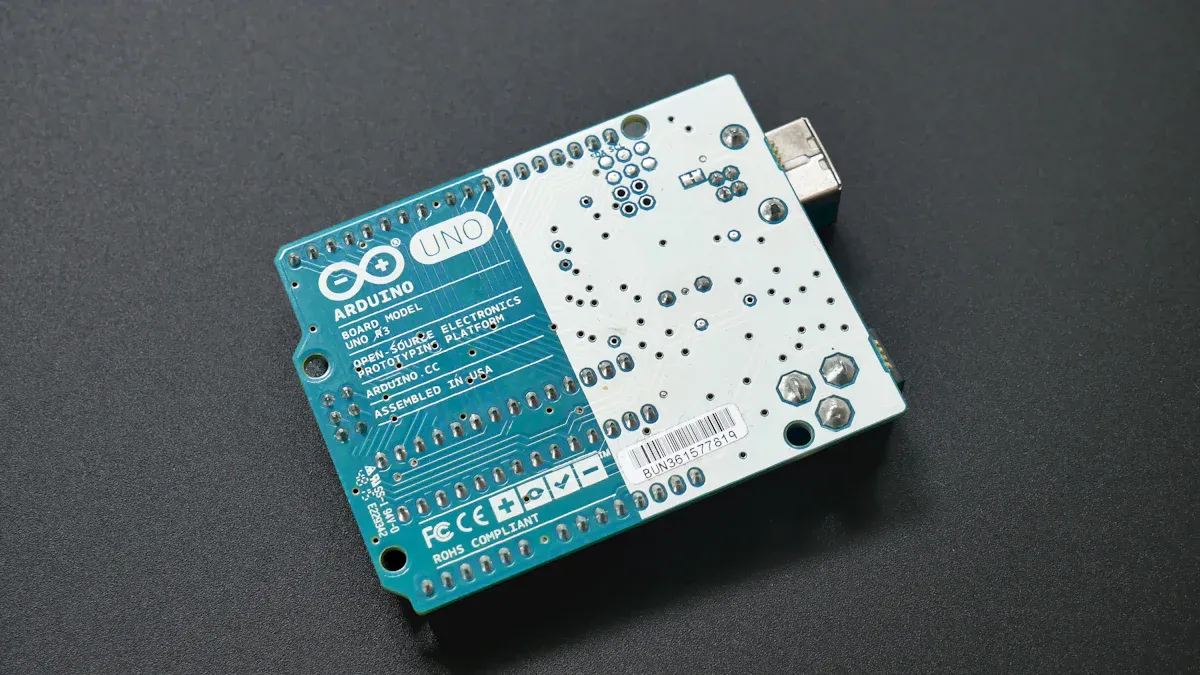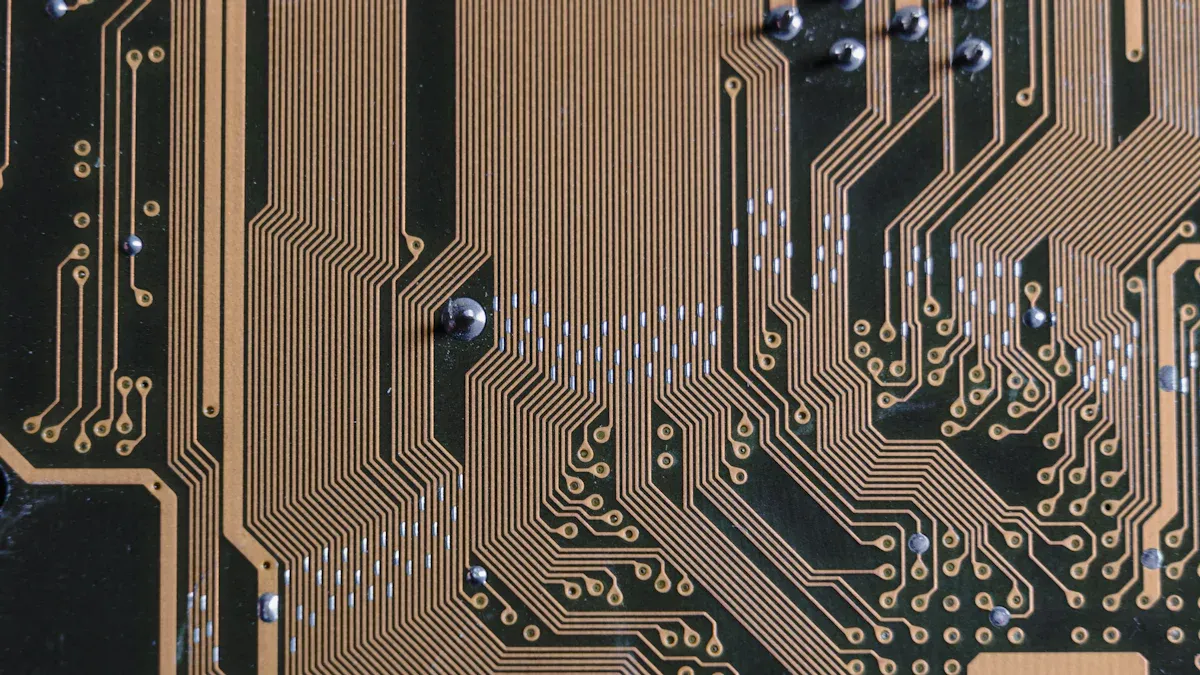How to Get Quick Turn PCB Prototypes in the USA

Quick turn PCB prototypes let you develop products faster. They help you stay ahead in the market. In the USA, making quick-turn PCBs is easier. Focus on good design and pick the right company. Quick turn PCB assembly lets you test ideas quickly. It helps you turn your plans into real products.
Key Takeaways
Quick turn PCBs help you make products faster. This keeps you ahead in the market.
Simple designs and quality materials make PCB assembly quicker. This saves both time and money.
Picking the right manufacturer is very important. Find one with good experience, proper certifications, and great customer service.
Understanding Quick Turn PCBs

What is a Quick Turn PCB?
A quick-turn PCB is a circuit board made very fast. It’s faster than regular boards and great for quick projects. You can use them to test ideas or prepare products. Instead of waiting weeks, you can get one in days. Some are ready in just 24 hours.
Here’s why quick-turn PCBs are special:
They are made quickly, in 1 to 7 days.
They help you test designs and find problems early.
They often include tips to make production cheaper and easier.
They check your product’s performance before making many copies.
Quick-turn PCBs save time but still work well. Following design rules helps the process go smoothly. Using simple designs and good materials makes them faster to build.
Why Quick Turn PCBs Are Important for Prototyping
When making new products, speed matters. Quick-turn PCBs help you turn ideas into real things fast. They’re great for testing and improving designs quickly.
Picture this: You have a cool idea for a device. You design it but aren’t sure if it works. With a quick-turn PCB, you can:
Make a prototype fast and see how it works.
Find mistakes early and fix them before full production.
Finish your product faster and launch it sooner.
This quick testing helps you try new ideas without wasting time. It also gives you confidence that your design works well.
In today’s fast world, quick-turn PCBs keep you ahead. They turn ideas into working models faster than others. Whether you’re new or experienced, they’re key for making products efficiently.
Benefits of Quick Turn PCB Prototypes
Faster Time-to-Market
When launching a product, speed is very important. Quick turn PCB assembly helps turn ideas into working prototypes fast. Instead of waiting weeks, you can get boards in just 24 hours. This speed is a big advantage in a fast-moving market.
Here’s how quick turn PCB assembly saves time:
Factories simplify steps to avoid delays.
They use standard designs and small batches for faster results.
Ready supply chains ensure materials are always available.
Check out these benefits:
Benefit | Description |
|---|---|
Quick turn PCBs help move quickly from prototype to production. | |
Established supply chains | Using ready materials makes the process faster and smoother. |
Optimized manufacturing | Improved processes cut production time, speeding up delivery. |
With quick turn PCB assembly, you can test and create products faster than before.
Better Design Testing and Fixing
Quick turn PCB assembly helps you test and improve designs quickly. You can make a prototype, test it, and fix problems fast. This quick process helps you find mistakes early and improve your product.
Think about this: You have a design but don’t know if it works. Instead of waiting weeks, you get a prototype in days. You test it, find an issue, and fix it. Then, you repeat until it’s perfect. This saves time and makes sure your product is great.
Shorter Development Time
Shorter development time lets you focus on important tasks. Quick turn PCB assembly removes delays, so you finish faster. By spending less time on prototypes, you can work on marketing or scaling production.
Quick turn PCB assembly isn’t just about being fast. It’s about working smarter and staying ahead. Whether you’re a new business or experienced, it’s a great way to improve product development.
Turnaround Times for Quick Turn PCBs
Typical Turnaround Times by PCB Type
Quick turn PCBs have different production times based on their type. The time needed depends on layers, complexity, and assembly. Below is a table showing common PCB types and their production times:
PCB type | Layers | Time without assembly (days) | Time with assembly (days) |
|---|---|---|---|
Standard rigid | 1 to 6 | 1 | 2 |
Standard rigid | 8 to 12 | 3 | 4 |
Rigid-flex | 1 to 12 | 5 to 7 | 6 to 8 |
Flex | 1 to 10 | 3 to 5 | 4 to 6 |
Simple boards, like standard rigid ones with fewer layers, are faster to make. Complex boards, such as rigid-flex, take longer because of their detailed designs. To save time, choose simpler designs when possible.
How Rush Orders Impact Delivery Schedules
Sometimes, you need PCBs faster than usual. Rush orders can help meet tight deadlines. Manufacturers prioritize your project, which changes delivery schedules:
Application: A European car company needed a flexible circuit for batteries.
Opportunity: Their old supplier missed deadlines, creating an urgent need.
Solution: Flexible Circuit Technologies quickly designed and made prototypes in eight weeks.
Result: The company met its deadline and secured future production.
Rush orders are helpful but often cost more. Planning ahead and sharing clear needs can save both time and money.
Factors Influencing Quick Turn PCB Assembly

Design Complexity and Layer Count
How complex your PCB design is affects assembly speed. Designs with more features often need extra layers. These layers add tracks and advanced functions but take more time. For example, switching from two layers to four layers can raise costs by 30-40%. It also adds steps, slowing production.
To get faster results, keep designs simple. Fewer layers and basic layouts are quicker to make. This saves time and lowers costs. It also helps you stay within budget and meet deadlines.
Material Selection and Surface Finishes
The materials and finishes you pick affect assembly speed. Good materials make production smooth, but they must be easy to find. Rare or custom PCB materials can take longer to get.
Surface finishes matter too. HASL (Hot Air Solder Leveling) is fast to apply. ENIG (Electroless Nickel Immersion Gold) takes more time. Picking finishes that fit your project without slowing production helps speed things up.
Tip: Ask your manufacturer about material availability and finish options to avoid delays.
Manufacturing Technology and Lamination Cycles
Modern tools and machines help make PCBs faster. Automation reduces mistakes and speeds up production. But lamination cycles, which bond layers, still take time. Multi-layer boards need more cycles, which slows things down.
Missing details in your design files can also cause delays. Problems like unsupported parts or vias in flex zones create issues. Adding clear ZIF (Zero Insertion Force) connection details helps assembly go smoothly.
Using advanced manufacturing methods and complete design files reduces delays. This helps you get your prototypes faster.
Choosing the Right Quick Turn PCB Partner
Key Criteria for Selecting a Manufacturer
Picking the right quick-turn PCB maker is very important. They must deliver on time and make high-quality boards. To choose the best one, ask yourself these questions:
What services or features are most important to you?
How will the PCBs fit into your production steps?
What design rules are essential for your prototype PCB?
Do you care about practices like helping the environment?
What performance goals matter most for your project?
After answering, check manufacturers based on these points:
Supplier Performance: Find one with a history of making great PCBs fast.
Risk Assessment: Look for risks like delays or poor quality.
Hidden Costs: Watch out for surprise fees during the process.
Business Practices: Pick a company that shares your values, like sustainability.
Competitive Advantage: Think about how they can help you stand out.
By focusing on these, you can find a partner who fits your needs and helps you succeed in quick-turn PCB production.
Why LTPCBA is a Trusted Partner for Quick Turn PCB Assembly
LTPCBA is a top choice for quick-turn PCB assembly. Here’s why:
Fast Turnaround Times: They deliver boards in 1 to 7 days, depending on complexity. This speed lets you test and improve designs quickly.
Commitment to Quality: Every batch goes through strict tests like AOI, electrical checks, and X-ray scans for multi-layer boards.
Advanced Technology: They use modern tools to reduce mistakes and work faster.
Customer-Centric Approach: They offer 24-hour support and quick replies to keep you informed.
“Low volume production often matches quick-turn PCB needs, letting you get boards in 1 to 7 days. This speed helps you adjust designs and launch products faster.”
Choosing LTPCBA means getting a partner who cares about your success.
Importance of Certifications and Customer Support
Certifications and customer support are key for a good PCB partner. Certifications show they care about safety and quality. Great support makes your experience smooth and stress-free.
Here are some important certifications to look for:
Certification | Description |
|---|---|
Shows focus on quality and improvement. | |
UL | Ensures safety for electrical and fire risks. |
RoHS | Meets rules for reducing harmful materials. |
REACH | Follows chemical limits, important for European markets. |
IATF 16949 | Meets standards for car-related products. |
ISO 13485 | Focuses on quality for medical devices. |
AS9100 | Ensures high standards for aerospace and defense projects. |
LTPCBA has these certifications, proving their focus on safety and quality. They also offer great customer support, like 24-hour help and fast quotes. This mix of certifications and support gives you confidence in their service.
A strong Quality Management System (QMS) is also important. LTPCBA uses tools to check for consistency and track every PCB’s materials and process. This transparency helps fix any issues quickly.
Working with a certified and helpful partner like LTPCBA ensures your quick-turn PCB needs are handled well.
Quick turn PCB prototypes let you create products faster. They make development easier and more efficient. Here are some benefits:
Help you launch electronics quickly.
Allow faster releases with great quality.
Improve production using smart technology.
Working with LTPCBA makes things simple. Check out their services now to speed up your project!
FAQ
What’s the quickest time to get a quick turn PCB?
You can get a quick turn PCB in 24 hours. But, the time depends on your design and the manufacturer’s tools.
Are quick turn PCBs good for prototypes?
Yes, they are great for prototypes. They help you test designs fast, save time, and improve your product easily.
How can I make sure my quick turn PCB arrives on time?
To get it on time, send correct design files. Pick materials that are easy to find. Share your needs clearly with the manufacturer. Planning early also helps.
See Also
Boosting Project Efficiency With Quick-Turn PCB Prototypes
Understanding Full Turn-Key Solutions For PCB Manufacturing
Choosing The Right PCBA Supplier For Your Requirements
